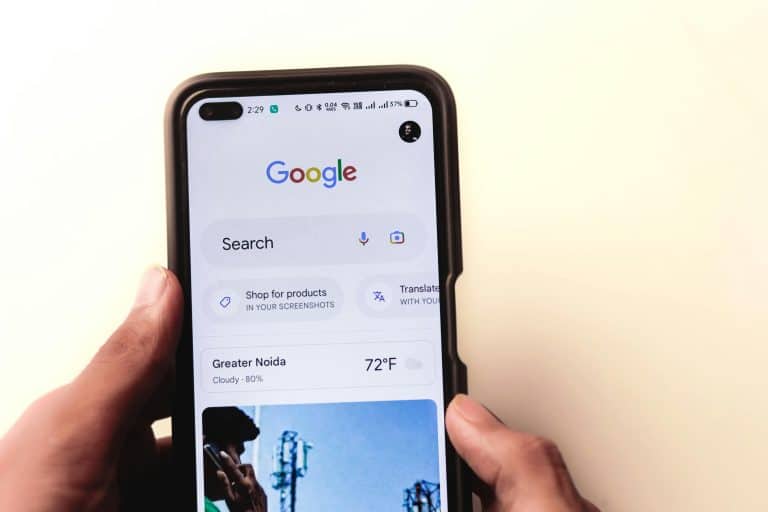You’ve spent months designing a stunning website, complete with sleek visuals and flawless functionality. But despite your hard work, it’s eerily quiet—no visitors, no clicks, no leads. Frustrating, right? That’s where SEO swoops in like the hero your website didn’t know it needed.
Web design is more than just good looks; it’s about crafting a seamless online experience that keeps visitors engaged. SEO, or Search Engine Optimization, ensures that your masterpiece doesn’t just exist—it gets seen. Together, they create a powerhouse duo that turns online spaces into vibrant hubs of activity.
And the results speak for themselves. From Later’s Social Media Glossary driving 60% of total site traffic to a baking blog like Handle the Heat winning Google’s heart with quality content, success stories prove the transformative power of combining web design with SEO. In this article, we’ll reveal how these two forces work hand in hand to boost rankings, captivate audiences, and grow your business.
Why SEO and Web Design Are Better Together
In the digital landscape, web design and SEO (Search Engine Optimization) are inseparable. Together, they create a website that’s not only visually stunning but also optimized for search engines, enhancing its performance and user engagement.
How Web Design Impacts SEO
A website’s design directly influences its SEO performance. Factors like mobile responsiveness, site speed optimization, and intuitive navigation affect how users interact with your site.
For example, a responsive website design ensures accessibility across devices, improving user experience (UX) and reducing bounce rates—both key factors for higher search rankings. Clean code and a well-structured layout also help search engines crawl and index your site efficiently.
How SEO Influences Web Design Choices
On the flip side, SEO principles guide web design by emphasizing the importance of optimized images, keyword-rich meta descriptions, and efficient internal linking. For instance, an SEO-friendly website design prioritizes usability and discoverability, ensuring that every design element contributes to better indexing and increased traffic.
Benefits of Integrating Both from the Outset
- Enhanced User Experience: A site designed with strategic branding solutions and SEO principles engages users and builds trust.
- Improved Organic Traffic: SEO-optimized content placement drives more visitors from search engines.
- Cost Efficiency: Integrating SEO and web design from the beginning reduces the need for costly redesigns.
- Stronger Online Presence: A balance of creative design and technical SEO ensures your site stands out.
By blending innovative web development solutions with SEO best practices, businesses can achieve both high-end web development and sustainable success.
Key Elements Where SEO and Web Design Intersect
In the digital landscape, the fusion of SEO and web design is crucial for creating a website that is both user-friendly and search engine optimized. Let’s explore the key areas where these two disciplines converge.
Mobile Responsiveness
With the surge in mobile device usage, ensuring your website is mobile-friendly is paramount. A responsive design adapts seamlessly to various screen sizes, enhancing user experience (UX). Search engines like Google prioritize mobile-friendly sites in their rankings, making responsiveness a critical SEO factor.
Best Practices for Responsive Design
- Flexible Layouts: Utilize fluid grids that adjust to different screen sizes.
- Media Queries: Implement CSS media queries to apply styles based on device characteristics.
- Optimized Images: Ensure images scale appropriately without losing quality.
- Touch-Friendly Navigation: Design buttons and links that are easily tappable on touch devices.
Site Speed Optimization
A fast-loading website retains users and reduces bounce rates. Search engines consider site speed a ranking factor, with faster sites often achieving higher positions in search results.
Techniques to Enhance Loading Times
- Image Compression: Reduce image file sizes without compromising quality.
- Minification: Minimize CSS, JavaScript, and HTML files to decrease load times.
- Browser Caching: Leverage caching to store static resources, speeding up repeat visits.
- Content Delivery Network (CDN): Use CDNs to distribute content across various servers, reducing latency.
User-Friendly Navigation
Intuitive navigation guides visitors to desired information effortlessly, enhancing their experience and encouraging longer site visits. Clear navigation reduces bounce rates, signaling to search engines that your site provides valuable content.
Designing Intuitive Menus and Layouts
- Logical Structure: Organize content hierarchically with clear categories and subcategories.
- Descriptive Labels: Use concise and descriptive menu labels for easy understanding.
- Consistent Layout: Maintain uniform navigation across all pages to avoid user confusion.
- Search Functionality: Incorporate a search bar to facilitate quick access to specific content.
Clean and Efficient Code
Well-structured, clean code ensures search engine bots can efficiently crawl and index your site, improving visibility and ranking potential.
Utilizing Progressive Enhancement Strategies
- Semantic HTML: Use meaningful HTML tags to convey content structure.
- Externalize Scripts and Styles: Keep CSS and JavaScript in external files to streamline HTML.
- Accessible Design: Ensure your site is navigable for users with disabilities, enhancing UX and SEO.
- Graceful Degradation: Design sites to function on older browsers while enhancing features for modern ones.
By focusing on these elements, you create a website that not only appeals to users but also performs well in search engine rankings, driving traffic and business success.
Looking to transform your website into a traffic magnet that’s as stunning as it is functional? At Pascual Creative, we specialize in crafting SEO-friendly website design solutions that don’t just look great—they perform.

The Role of Content in SEO-Friendly Web Design
Content is the heart of any website, and when seamlessly integrated with design, it becomes a powerful tool for driving traffic and conversions. An SEO-friendly web design prioritizes the placement and optimization of content to ensure visibility and engagement.
SEO-Optimized Content Placement
Strategic content placement is key to making your site both user-friendly and search-engine-ready. Using keywords strategically in headers, subheaders, and body text helps search engines understand the relevance of your content. But it’s not just about keywords—it’s about creating content that’s readable and engaging.
Here are a few tips:
- Break text into shorter paragraphs
- Use bullet points to emphasize key information
- Structure content logically so users can easily navigate through it.
Note that the more engaging and scannable your content, the longer users stay on your site, reducing bounce rates and signaling search engines that your site is valuable.
Visual Elements and Their Optimization
Visual elements like images and videos enhance user engagement, but they also need to be optimized for SEO.
- Proper alt text descriptions make images accessible and help search engines understand their context.
- Descriptive and keyword-rich file names further improve SEO.
- Ensure images are compressed to avoid slowing down your site.
A fast, visually appealing website with optimized visuals enhances the user experience while boosting your rankings.
Ready to Make Your Website Work Smarter, Not Harder?
Integrating SEO and web design is the ultimate formula for creating a website that attracts, engages, and converts. By combining stunning visuals with smart optimization strategies, businesses can enhance user experience, boost search rankings, and drive meaningful results.
Ready to turn your website into a business powerhouse? Let SEO and web design work their magic together! At Pascual Creative, we specialize in building visually stunning, SEO-friendly websites tailored to help your business thrive. Let’s create a digital experience that drives results—contact us today to get started!



